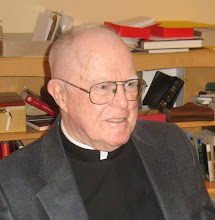WORSHIP IN THE ASSEMBLY
Throughout the Old Testment, the notion of "assembly" appears countless times, suggesting the importance to the Jewish people of doing things together. Their people assembled to travel, to make war, and, above all, to worship. The sound of the shofar - their trumpet - was the call to a "solemn assembly" for worship.
Jesus occasionally goes alone into the mountains to pray, but, characteristically, he is usually surrounded by people - apostles, disciples, and a company of women who traveled with Him
(Matt 27, 55). "Where there are two or three gathered together in my name. there am I in the midst of them". (Matt. 18, 20). The Acts of the Apostles makes many references to the small groupings of the faithful gathered together for prayer. The early church consisted of such
gatherings of the faithful in "house churches". In time, Christian worship moved into churches and cathedrals, where architecture and art provided appropriate ambiance for the worship of the assembly.
As we priests move into retirement, life styles suddenly change. New structures of a different kind of activities must be developed. The most striking change for a priest at Mass is the absence of the assembly. He, with fellow concelebrants, face outward towards empty space! With a congregation, the Mass has a different dynamic. Priest and people face each other. What is written on all those faces are messages even more meaningful than the vernacular language in use. A communication of the spirit, very likely similar to that experienced in those "house churches" of old, is a powerful dynamic sorely missed. Yes, the Mass is the Mass, but...
Physisists tell us that when a tree falls in a remote forest, there is no sound unless there is an ear to pick up the sound waves. The sound waves rush out and away silently; no ear drum to catch them. Thus, no sound. A Mass, whether single celebrant or concelebrants, without an assembly has lost an important dynamic. Listening in your study to music on a CD or via radio is quite another thing than being in a concert hall, where you not only hear the music but share the response in your neighbors and throughout the assembly. If the performance of the musicians reaches a high point of artistic excellence, the response of the audience becomes a part of the total performance A Mass without a congregation is missing an important dynamic.
How essential are the faithful!
Comments welcome!
Jesus occasionally goes alone into the mountains to pray, but, characteristically, he is usually surrounded by people - apostles, disciples, and a company of women who traveled with Him
(Matt 27, 55). "Where there are two or three gathered together in my name. there am I in the midst of them". (Matt. 18, 20). The Acts of the Apostles makes many references to the small groupings of the faithful gathered together for prayer. The early church consisted of such
gatherings of the faithful in "house churches". In time, Christian worship moved into churches and cathedrals, where architecture and art provided appropriate ambiance for the worship of the assembly.
As we priests move into retirement, life styles suddenly change. New structures of a different kind of activities must be developed. The most striking change for a priest at Mass is the absence of the assembly. He, with fellow concelebrants, face outward towards empty space! With a congregation, the Mass has a different dynamic. Priest and people face each other. What is written on all those faces are messages even more meaningful than the vernacular language in use. A communication of the spirit, very likely similar to that experienced in those "house churches" of old, is a powerful dynamic sorely missed. Yes, the Mass is the Mass, but...
Physisists tell us that when a tree falls in a remote forest, there is no sound unless there is an ear to pick up the sound waves. The sound waves rush out and away silently; no ear drum to catch them. Thus, no sound. A Mass, whether single celebrant or concelebrants, without an assembly has lost an important dynamic. Listening in your study to music on a CD or via radio is quite another thing than being in a concert hall, where you not only hear the music but share the response in your neighbors and throughout the assembly. If the performance of the musicians reaches a high point of artistic excellence, the response of the audience becomes a part of the total performance A Mass without a congregation is missing an important dynamic.
How essential are the faithful!
Comments welcome!

